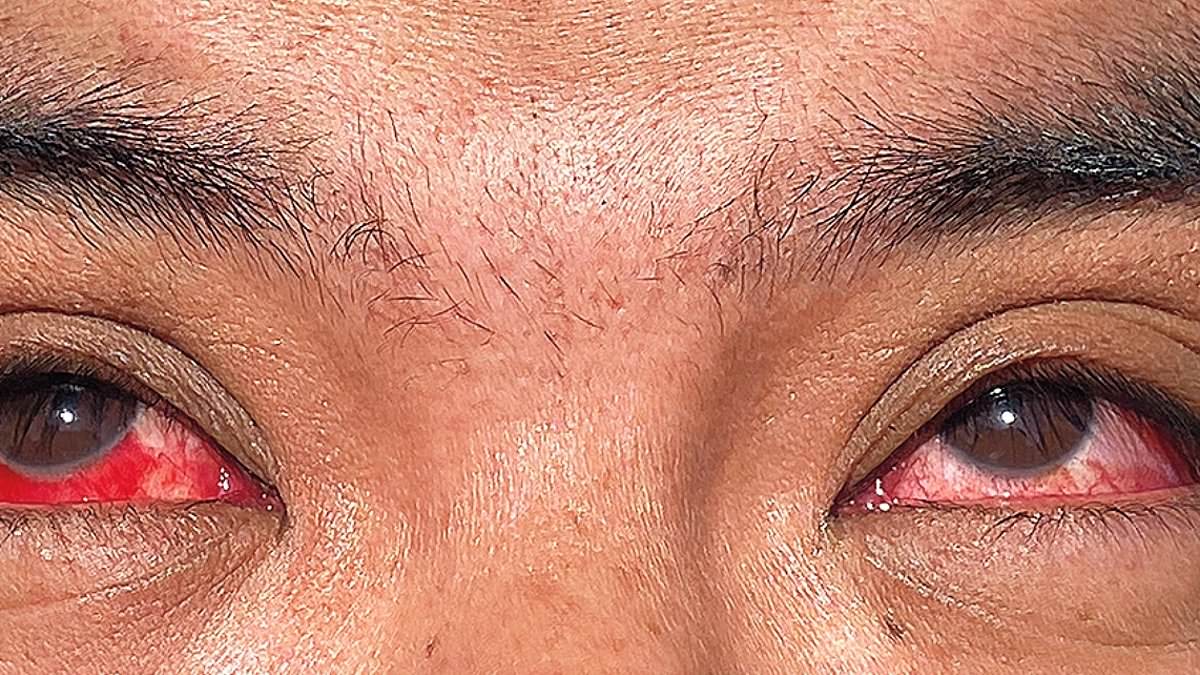Doctors are expressing alarm about a mutated form of bird flu that infected a farm worker in Texas.
The patient contracted the virus, his eyes turning red and itchy, from contact with an infected dairy cow or chicken in Texas.
Government-backed researchers took a sample of the virus, infected mice and ferrets with it and found it had evolved to become far deadlier than the wild strain currently spreading on US farms.
It also spread between animals through the air, a key milestone that would theoretically allow it to be more contagious in humans.
But crucially, the tests showed that some antiviral drugs could work against this strain of the virus if this is the case.
The experts are now warning health officials to keep a closer eye on the movement of the virus, in order to contain the outbreak before it can evolve further and infect more humans.
Discussing the research, government officials said: ‘These mutations underscore the need for continued monitoring and evaluation of viruses from the current H5N1 outbreak.’
So far, 34 humans in the US have been infected with bird flu in 2023, 33 of which have been linked to contact with infected cows or poultry.

The above picture of the symptoms suffered by the dairy farmer in Texas who caught bird flu was published in the New England Journal of Medicine
The virus is not known to be transmissible between humans. Still, one unidentified Missouri man caught the disease without ever contacting an infected animal.
Researchers have suggested that drinking unpasteurized milk from an infected cow or raw egg from an infected chicken could also spread the virus.
Bird flu has been rocking the US for the past few months – hitting Texas, New Mexico and Missouri.
It causes red, itchy eyes and mild respiratory symptoms.
Last week, bodies of dairy cows piled up in California as farm workers aimed to contain the spread of the disease, which hit 124 herds of dairy cows.
In the new paper, researchers funded by the National Institute of Allergy and Infectious Diseases (NIAID) took a sample of the H5N1 virus from the eye of a Texas dairy worker who had been infected with the disease to see how it would affect animals in the lab.
They tested it in both mice and ferrets, and noted that ferrets tend to have a similar response to flu virus as humans do.
They published their findings as a pre-print, which means it has yet to be peer reviewed by other scientists, in the journal Nature.
They found the virus had become mutated, and that it was able to pass through the air – affecting between 17 and 33 percent of ferrets placed in neighboring cages.

Dead cows are piling up in California as dairy farmers battle H5N1 bird flu, which made landfall in the state in August
The study also compared how much of the huTX37-H5N1 strain it took to kill a mouse, and compared it to a un-mutated H5N1 strain from a study published in Nature in July.
It found that to kill a mouse, they needed less than one unit of the huTX37-H5N1 virus, compared to 31.6 units of the H5N1 virus from July.
This suggests that the mutated virus could be 30 times more potent than older strains.
Within a week of being directly infected with the virus, all the ferrets that were directly infected with the virus by researchers died from the disease. It’s unclear if the animals that caught the virus from the air died.
At this point, researchers say that humans can only get the virus when they comes into direct contact with bodily fluids from an infected animal.
But if the virus is able to spread to the air, it has the potential to infect many more individuals.
The NIAID study did find that some antiviral medications were able to halt the symptoms of the virus – including some, like Xofluza, which are already on the market.
The study authors said: ‘based in these observations, every effort should be made to contain HPAI H5N1 outbreaks in dairy cattle to limit the possibility of further human infections.’










